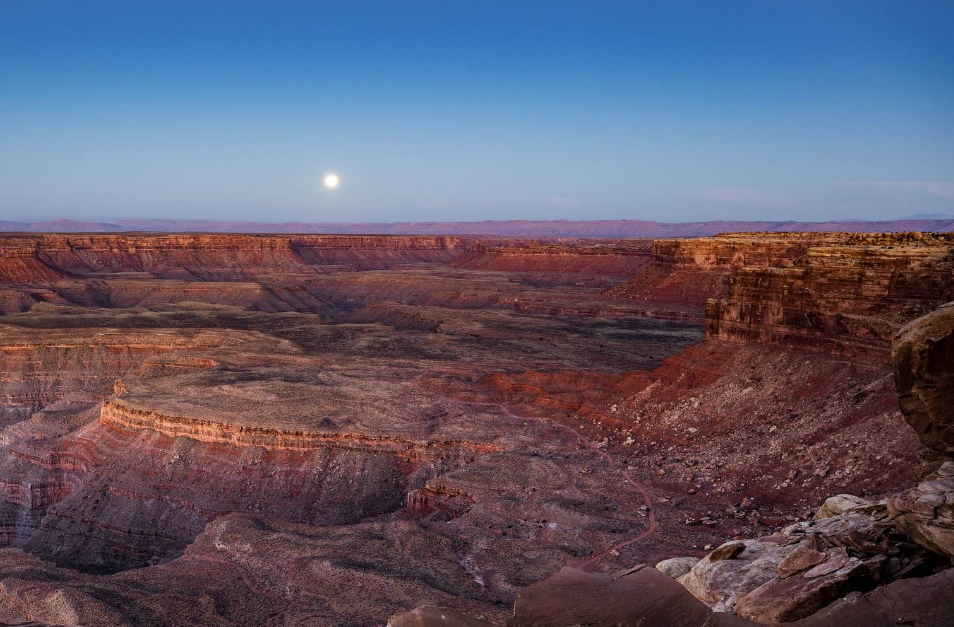The real energy success story of the past decade has been the hydraulic fracturing revolution. Since 2007, electricity generation from natural gas alone has increased four times faster than from wind and solar. Over the same time period, domestic oil production has increased by 85 percent—almost all of which came on state and private lands. The increase in oil and gas production was a result of private property rights and technological advances from the private sector—not the federal government providing targeted subsidies to increase oil and natural gas production.
A Blueprint for America’s Comeback
After eight years of the Obama administration’s divisive energy and environmental policies, the American people have voted for a change—a big change. Now is the time to carry out that change.
It is time to modernize and improve energy policy in the United States. As we consider our energy future and which policies will work best, it’s important we understand that energy breakthroughs happen when the government gets out of the way and lets innovators and entrepreneurs flourish.
The Obama administration often touts the increasing energy production from its preferred energy sources—wind and solar. It shouldn’t come as a surprise that wind and solar production has grown as the Obama administration has provided tens of billions of dollars in subsidies for these sources and administered regulations that hinder competing energy sources.
However, the real energy success story of the past decade has been the hydraulic fracturing revolution. Since 2007, electricity generation from natural gas alone has increased four times faster than from wind and solar. Over the same time period, domestic oil production has increased by 85 percent—almost all of which came on state and private lands. The increase in oil and gas production was a result of private property rights and technological advances from the private sector—not the federal government providing targeted subsidies to increase oil and natural gas production. In fact, it happened despite the Obama administration’s keep-it-in-the-ground approach to oil and gas production.
Besides the Obama administration’s antagonism to oil and natural gas production, this revolution also did not happen because Congress passed an “energy” bill directing how oil was to be produced or providing targeted subsidies. Instead, the hydraulic fracturing revolution flourished because Congress specifically precluded the federal government from usurping the states’ regulatory authority over groundwater.
The results of the hydraulic fracturing revolution have been unbelievably positive. Global oil and natural gas prices have fallen and remained low. Increased energy production has diminished the power of OPEC and Russia to manipulate energy markets.
A decade ago the experts did not predict that U.S. oil and natural gas production would dramatically increase. Instead, there was talk about running out of oil and importing natural gas. Now the conversation is about exporting both. As we look to the future, it is important to remember how people did not see this revolution coming.
This should be an important reminder that Congress and Washington policymakers do not know what the future holds, and neither do we. The hydraulic fracturing revolution shows that our future will be brighter if we allow the American people to figure out what works best instead of trying to dictate policy and special subsidies from Washington.
President-elect Trump has a unique opportunity to advance an energy plan that fosters true innovation, helps consumers, and improves opportunities for American workers and families.
To do so, the Institute for Energy Research and the American Energy Alliance encourage the Trump administration to do the following:
- Keep electricity affordable and reliable by halting EPA’s attempt to take over the nation’s electricity system. Currently the D.C. Circuit is considering the legality of the rule. However, the Trump administration can issue Executive Orders the first day of his administration that effectively halts this harmful regulation. As attorneys David Rivkin and Andrew Grossman recently explained:
President Trump can immediately issue an executive order to adopt a new energy policy that respects the states’ role in regulating energy markets and that prioritizes making electricity affordable and reliable. Such an order should direct the EPA to cease all efforts to enforce and implement the Clean Power Plan. The agency would then extend all of the regulation’s deadlines, enter an administrative stay and commence regulatory proceedings to rescind the previous order.
- Lower the price of cars and trucks and empower consumers by repealing the federal fuel economy mandates. These mandates, also known as the Corporate Average Fuel Economy (CAFE) standards, were dramatically increased under the Obama administration to require cars and light trucks to average 54.5 mpg by 2025. According to recent research, this mandate may have already driven up the cost per vehicle by $6,000—and the even stricter mandates have not yet kicked in. Vehicles are already too expensive, and this additional mandate should be stopped and American drivers should be allowed to choose the attributes of the vehicles they drive, rather than Washington bureaucrats.
- Produce more energy on federal lands. Less than 3 percent of federal offshore areas are currently leased for energy development, and the Obama administration just released a 5-Year offshore plan with no areas open offshore Alaska (other than a small area in Cook Inlet), the Atlantic, or in the Pacific. More lands should be leased onshore, including the National Petroleum Reserve-Alaska and oil shale lands in the West.
- Let workers mine coal. The Obama administration’s coal leasing moratorium on federal lands—part of its “keep it in the ground” agenda—should be lifted.
- Empower states. States should have a greater authority with respect to energy leases on federal lands within their borders. A good option was proposed by President-elect Trump in his response to our Presidential candidate questionnaire:
“The federal government does have stewardship of millions of acres of land. Rather than selling the land to states and private enterprises, the first step should be establishing a shared governance structure with the states. This first step would allow for maintaining the aesthetics of the land while finding ways to gain revenue that would benefit both the federal and state governments.”
- Defend the Constitution and withdraw from the Paris Agreement. President Obama was warned by many members of Congress that he should not enter into the Paris Agreement without the consent of the American people through their representatives in the U.S. Senate. Because the Paris Agreement is an executive agreement that does not bind the United States or any other country, President Trump can, and should, “unsign” it and submit the agreement to the Senate for its consent. President Obama’s unilateral executive actions cannot bind future administrations.
- Modernize and update the data that underpins the endangerment finding. In response to Massachusetts v. EPA, the Obama administration found that greenhouse gas emissions harmed human health and welfare. This is the regulatory predicate to the Obama administration’s CAFE mandates and carbon dioxide regulations for power plants. This finding should be updated with the most recent science and information.
- Improve the siting of pipeline infrastructure. The Obama administration slow-walked the Keystone XL pipeline to make it a political issue and eventually denied the pipeline. They have similarly held up the Dakota Access Pipeline. Pipeline siting should be a streamlined and orderly process.
- Treat all energy sources equally. The federal government should treat all types of energy equally. No subsidies and no special tax treatment.
- Protect America’s fuel supply by repealing the Renewable Fuel Standard (RFS). The RFS was based on the belief that America had limited energy resources and was running out of oil. The RFS requires refiners to blend expensive, and largely unavailable, “advanced” biofuels. The RFS should be repealed.
- Preserve consumers rights to their own property. The Obama administration’s “waters of the United States” rule usurps the states’ regulatory prerogatives as well as private property rights. This regulatory definition should be rewritten.
- Follow the rules. Any regulatory action needs to follow the rules laid out for the federal government. The “Social Cost of Carbon” (and methane) is impermissibly arbitrary and does not follow Executive Orders and federal rulemaking requirements. The Social Cost of Carbon should not be used in federal rulemakings.
- Be open and honest. The government should act openly, honestly, and transparently.
- Count the costs of regulations. We need an accounting of the cost of all the regulations imposed by the federal government.
- Inventory the assets. We need to make sure that the government has a good idea of the value of energy resources on and under federal lands.
- Stop corruption. Agency work on regulations and science should be reviewed by truly independent reviewers.
Conclusion
For decades, the federal government’s role in Americans’ energy choices has steadily grown and has ballooned under the Obama administration. If we want our children and grandchildren to enjoy the same opportunities and economic growth as past generations, we must reset a generation of failed environmental policies from a distant and out of touch federal government.
The Trump administration provides an opportunity to protect the environment and grow the economy. It is important that we move America forward with energy policies for the 21stcentury that empower Americans to make their own choices, instead of relying on bureaucrats make such vital decisions for them.
It’s time for an American comeback.
Download the PDF HERE





I will take common sense ideas over manufactured news or scare tactics.